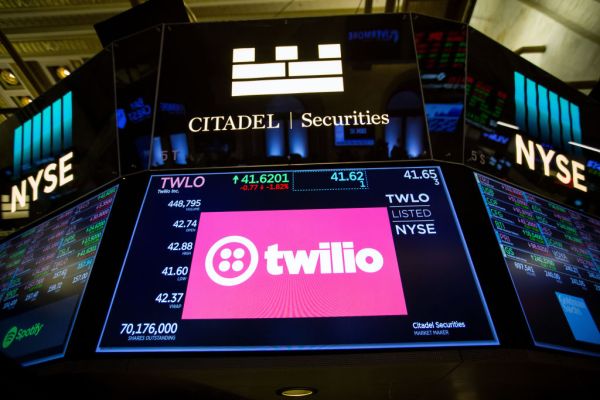When Twilio bought Segment last year for a hefty $3.2 billion, you knew it was going to put it to work. Today at the company’s Signal customer conference, it announced a new omni-channel marketing tool built on top of Segment called Twilio Engage.
Segment CEO Peter Reinhardt says the new tool is designed to take advantage of several pieces of the Twilio product family including Segment to create an entirely new cloud marketing technology (MarTech) tool.
“What we’re launching today is Twilio Engage, a brand new growth automation platform, built natively on Segment as the customer data platform (CDP) and natively on Twilio’s communications APIs,” he said. The goal of the new application is to help marketers to understand their customers better and provide a way to deliver more customized messaging.
It starts by taking advantage of Segment, gathering customer info from over 50 data sources. Next, the piece that really drives this tool is a new journey orchestration component, which lets marketers define a workflow for each set of customers. They can then write and deliver customized messages across the different communications channels including email and SMS, which is where Twilio’s core communications APIs come into play, and they can also connect to a variety of external tools.
These different communications components can be delivered in the form of customized text messages, emails or ads when the journey workflow meets certain conditions or encounters certain triggers. “You can create an entire campaign now, soup-to-nuts, with all the content, all the audience creation, all the targeting inside of Twilio Engage,” he said.
As an example, say a sneaker company has a running app. Using Twilio Engage, they could set up a campaign that begins when a user logs 100 miles in the company’s app. That milestone could trigger an SMS text with a congratulatory message (using Twilio’s Communications API). If the individual is also an existing customer, the system could automatically send an email congratulating them on reaching their first goal and include a 20% off coupon. If the user was not a customer, the company could re-target them across different ad channels — Facebook, Snapchat, Google — with a similar discount and message.

Twilio Engage workflow. Image Credits: Twilio
Daniel Newman, founder and principal analyst at Futurum Research says that while the full plunge into MarTech is new, the company has had a foothold there with the CDP and its messaging platform, and he thinks it can leverage its developer community to make this move successfully.
“While the CDP and MarTech environments are highly competitive, I do believe that Twilio, and it’s loyal developer community will be attracted to the company’s expanded offering as the aspirational goals of understanding your customer’s [full] journey continues to be a complex, yet increasingly possible goal for marketers and revenue leaders,” Newman said.
It is clear that Twilio wants to expand its platform and revenue opportunities beyond the core communications APIs the company was built on. Reinhardt says that it became clear to him and Twilio CEO Jeff Lawson that the best use case for combining the two companies’ tool sets involved marketing, and that’s why they are placing this bet.
“We spoke with customers, and as we looked at how folks were using the messaging API’s on Twilio and how folks were using the data on the Segment side, it was really obvious that on both sides the [biggest use case] is marketing. And there’s a lot that we could do to make that easier and better,” he said. That resulted in them building Twilio Engage.
It will be going into pilot with select customers today and is expected to be generally available in the first half of next year.
